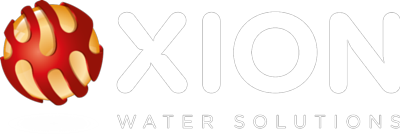Reverse Osmosis
Products
Introduction
Reverse Osmosis (RO) is widely used in all areas of water treatment due to its ability to produce high-quality water from most feed sources. RO’s will produce water with very low levels of Total Dissolved Solids (TDS) and > 99% removal of all inorganic colloids, organic compounds and micro-organisms. Each RO application is individual, dependant on local feed water characteristics, product water requirements and onsite conditions.
Xion Water Solutions provide an extensive range of standardised and bespoke RO systems designed, built and tested to the highest quality. Incorporating computerised design and analysis software and our industry leading experience, Xion Water will deliver the optimal system configuration and cost effective RO solution to integrate into your business.
Osmosis is a natural phenomenon where by a solvent (typically water) moves from a zone of low solute (dissolved ions) concentration to a zone of high solute concentration by passing through a semi-permeable membrane. Whenever there is a difference in solute concentration across a semi-permeable membrane there will be a resultant osmotic pressure created that is proportional to the difference in concentration. A simple example of this would be if two halves of a U-tube were separated by a semi-permeable membrane and one half was filled with fresh water and the second half was filled with sea water.
Intro to how Reverse Osmosis Works
Benefits of Reverse Osmosis
High quality, reliable water source
Reduced chemical use and waste compared to ion exchange demineralisation
Non-hazardous waste stream
High water use efficiency
Simple, robust technology
Technical Details
See the Xion ‘Knowledge Hub’ to find a wealth of material covering the theory of reverse osmosis and helpful hints on typical RO trouble shooting and plant operation.
Get in touch
Typical Applications
- Demineralised water production
- Potable water supplies
Sea water desalination
Boiler feed water/steam generation
- Food and beverage manufacturing
- Pharmaceutical
- Hospital – dental, endoscopy and sterile service departments
- Engineering and manufacturing
- Metal and surface finishing
- Glass manufacturing
- Semiconductor manufacturing
- Waste water reclaim
Take a look here:
Industrial
Healthcare & Pharmaceutical
Food & Beverage
Service & Support
Get in touch today for further information on reverse osmosis - Our team are ready to help. Call us today on 01733 666655 or email us hello@xionwater.com
Osmosis will attempt to equalise the concentration of the two solutions, requiring movement of the water from low solute concentration side, through the membrane, to the high solute concentration side. However, most uses of water require desalinated or purified water. This can be formed by a process which forces the water to act against the natural osmotic behaviour, hence the term reverse osmosis. This produces pure water from salt or brackish sources. To overcome the natural osmotic force, pressure is applied to the water via a high pressure pump, typically 8-17 bar for brackish water and 50-80 bar for seawater sources. When the applied pressure exceeds the osmotic pressure, pure water will permeate through the membranes leaving behind the dissolved salts, suspended particles and organic compounds. Reverse osmosis separates the feed water into a permeate stream and a concentrate stream. The permeate is considered as pure water, free of dissolved salts, suspended solids and organic compounds. The concentrate stream contains a fraction of the feed water and the bulk of the dissolved solids and suspended particles, typically the concentrate goes to drain as the waste stream.
How does Reverse Osmosis Work?
